Cornea
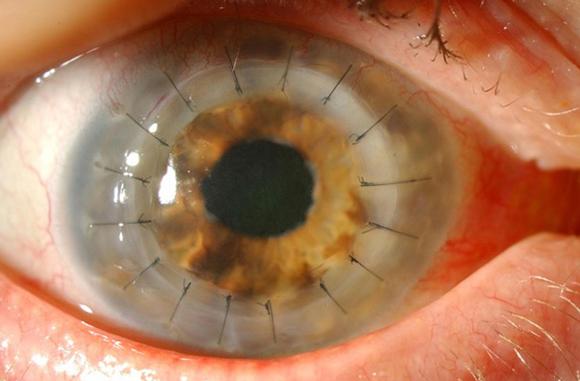
Corneal Transplants: Full Thickness and Partial Thickness (DALK, DSAEK, DSEK, PDEK, DMEK)
All types of corneal transplants (partial thickness or full thickness) to treat scars, keratoconus, and water logging of the cornea (endothelial dystrophy).
The cornea can be affected in a number of ways which prevent passage of light and proper focus of light in the eye. Often the only treatment is a cornea transplant. The affected cornea is removed and replaced with a healthy disc. Depending on which layer of the cornea is affected, a selective transplant of that layer is performed.
These procedures are referred to as Deep Anterior Lamellar Keratoplasty (DALK), Endothelial Keratoplasty including Descemet’s Stripping Endothelial Keratoplasty (DSEK/DSAEK), Descemet’s Membrane Endothelial Keratoplasty (DMEK) and Pre-Descemet’s Endothelial Keratoplasty (PDEK). The specific surgery required will depend on the layer affected.
Occasionally, a disc of all the layers of the cornea has to be removed and replaced with a full thickness graft also called a Penetrating Keratoplasty (PKP). All these surgeries are performed to improve sight.
When the cornea is severely affected by disease and/or infection, a corneal transplant is required to remove the affected cornea. This will save the eye structure and preserve the globe till the eye settles, before a sight restoring transplant can be performed. This is called a tectonic graft.
Collagen Cross Linking (CXL)
Use of ultra violet light to arrest progression of keratoconus and corneal ectasia.
Keratoconus is a common condition that affects young individuals. It occurs when the cornea progressively bulges out and turns into a cone shape, which can affect vision. When severe, a cornea transplant is required.
Corneal Collagen Cross-Linking (CXL) can prevent progression occurring. Optimum results are achieved when keratoconus is caught early and the eye still has good vision.
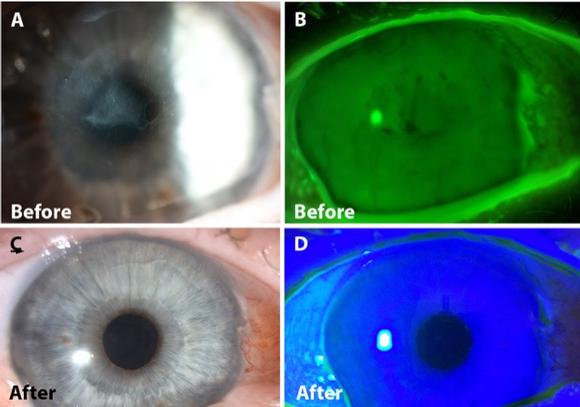
Alcohol Delamination of Corneal Epithelium (ALD)
Removal of a sheet of the front lining of the cornea to treat a variety of conditions, especially recurrent corneal erosions.
Alcohol delamination is a simple technique that treats a number of conditions. It is most effective when used to treat recurrent corneal erosion syndrome.
Chelation of Calcium
Chemical dissolution of calcium deposits on the cornea.
With some diseases, calcium can build up on the surface of the cornea. This causes blurred vision and irritation. The calcium is removed by dissolving it with a soft chemical that is completely safe. The calcium can also be removed by laser Photo Therapeutic Keratectomy (PTK).
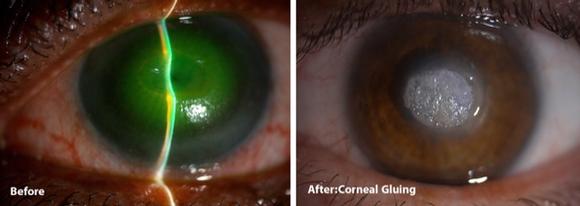
Corneal Gluing – Fibrin and Cyanoacrylate
To seal perforations or threatened perforations or reinforce area of extreme thinning with synthetic (cyanoacrylate) or biological (fibrin) adhesives.
Corneal perforation can occur from disease, infection and injury. Fibrin glue is used to stick grafts of conjunctiva and amniotic membrane making them suture-less procedures.
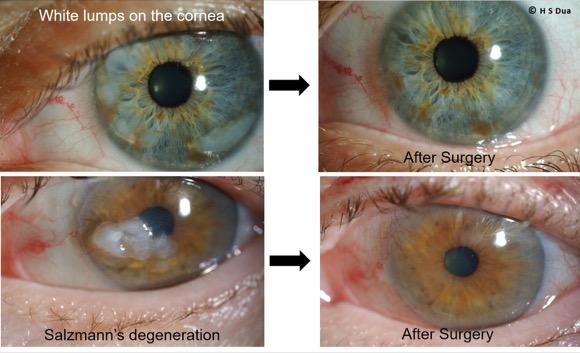
Superficial Keratectomy and Excision of Lesions
Removal of the superficial diseased layers of the cornea.
Lumps and bumps on the cornea can cause dry eyes, irritation and affect sight. These can be removed by shaving off a thin layer off the surface of the cornea, removing all irregularities.

Corneal Biopsy, Corneal Scrapes
Sampling of diseased tissue to establish a diagnosis.
When a diagnosis is needed or further investigation required, a sample of tissue can be removed though a biopsy. Infected material can be scraped off and sent to a laboratory for analysis.
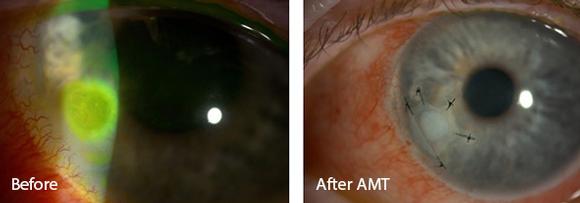
Amniotic Membrane Transplant to Cornea
Use of amnion (lining of the baby in the womb, which has many healing qualities) to treat a variety of conditions of the cornea as a sole treatment or in combination with others.
The amniotic membrane can be used in operations such as stem cell transplants and corneal transplants.

Repair of Lacerations
Accurate stitching together of cuts and tears of the cornea.
When there is an injury to the eye, partial and full thickness cuts need to be stitched precisely so that shape and transparency of the cornea is maintained. When shape is distorted, this can cause a loss of focus and reduced vision.
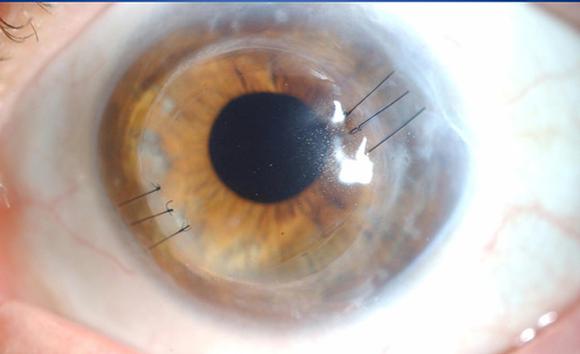
Arcuate Incisions and Compression Sutures
Making controlled cuts to reduce astigmatism and improve the shape of the eyeball.
After corneal transplant, in particular Deep Anterior Lamellar Keratoplasty (DALK) and Penetrating Keratoplasty (PK), the shape of the corneal graft/transplantation loses roundness. Precise semi-circular cuts are made to correct the axis and improve the shape of the eyeball. This ensures a better fit of contact lens and less powerful glasses.
If you are looking for an eye surgeon in Nottingham, Mansfield or Derby, please get in touch to book an appointment with Dr. Said at Vision and Sight Services and find out more about cornea treatments.